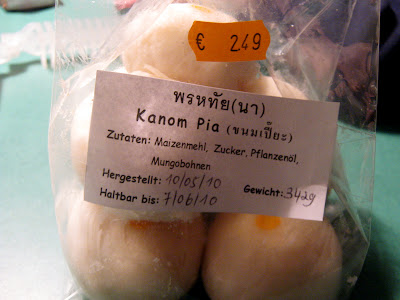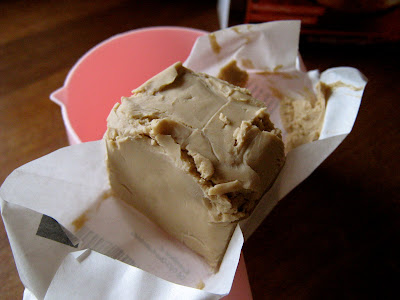The other day I pulled out an unopened bag of sweetened, shredded coconut that had been sitting in my fridge since I returned from the U.S. last December. (Perhaps you can get the sweetened version in Denmark, but I've never seen it.) I realized it was probably time to do something with it. I thought I'd make macaroons, but then I spotted a recipe on the bag for pie and was more inspired to try that instead. The only problem is that the recipe called for baking mix, such as Bisquick.
First, I've resolved never to use Bisquick again if I can help it. It's not that I hate the stuff, but it's very processed and contains all sorts of questionable ingredients. In other words, Bisquick is about as far from natural as you can get. However, having a go-to baking mix is extremely handy for all sorts of things (pancakes, waffles, biscuits, crumbles, and more). So why not make your own and control what you put in it?
So I scoured online and hard copy recipes to arrive at something I could feel comfortable with. Normally, for the flour, I would use either all or part whole-wheat, but I'm short on that precious staple at the moment. And, you wouldn't think so, but finding plain, finely ground, whole-wheat flour is next to impossible in my town. It's easy to get whole-rye flour, for example, or sometimes I can find whole-grain gluten free flour, but I'd just as soon skip both of these as the basis for my baked goods.
We're going to France in July, so guess who will be coming back to Denmark with a trunk full of whole-what flour? Guilty as charged.
At any rate, this baking mix is easy to mix up, sits happily in the refrigerator for weeks, and turns out some tasty pancakes.
I also used it to make the coconut pie from the Baker's Angel Flake Coconut package, but I'm calling it Coconut Custard Pie, because it tastes nothing like a traditional coconut pie to me. Also, because there is sugar in the baking mix and sugar in the coconut, I completely eliminated the sugar called for in the recipe. Quick aside: I realize that what I said about Bisquick being loaded with preservatives and other unnatural ingredients goes for sweetened, shredded coconut, too. At least the Baker's brand. I suppose I feel better (but only slightly so) about using the coconut because it's something we eat so seldom. Whereas, I refuse to make my kid pancakes every Sunday from a heavily processed mix.
Okay, back to the pie.
The result is a slightly sweet, eggy, coconut dessert that I think would make a perfect accompaniment to brunch. And if you're not a fan of coconut, don't even bother. But I really like this pie because it offers something different in the way of flavors and texture and isn't overly sweet.
Homemade Baking Mix
8c. flour (unbleached white or whole wheat)
4T sugar
1T salt
1/4c baking powder
1c. powdered milk
1/2c. non-hydrogenated margarine (or shortening)
1/2c. canola or vegetable oil
1. In a large bowl, combine first five ingredients. Stir well. Using a pastry cutter, blend in shortening or margarine until mix starts to resemble coarse corn meal. Add canola or vegetable oil a tablespoon at a time and, using your hands, make sure the fats are well blended into the dry mix. When you are finished it should look like powder (with a bit of coarseness).
Place in covered plastic container and store in refrigerator up to 4 weeks.
Pancakes
1.5c baking mix
1c milk
1 egg, lightly beaten
1. In a bowl, mix together egg and milk. Add baking mix and, using a fork or wire whisk, blend 4-5 strokes. Do not over mix.
2. Heat greased skillet and pour by 1/4c for small pancakes or 1/2 cup for big pancakes.
Serves enough for 2 adults and 1 toddler (toddler is known to eat three pancakes!)
Coconut Custard Pie
Adapted from Baker's Angel Flake Coconut Amazing Coconut Pie
2c. milk
1/2 baking mix
4 eggs
1/4c butter, softened
1t vanilla
1 1/3c sweetened, shredded coconut (such as Baker's Angel Flake Coconut)
1. In a food processor, blender, or bowl of electric mixing bowl, combine milk, baking milk, eggs, butter, and vanilla. Mix for 3 minutes. Pour into greased 9" pie plate. Sprinkle coconut over the top.
2. Bake at 350F (180C) for 40 minutes or until the center is set and top is golden brown. Serve warm or cool on wire rack. Store leftover pie in refrigerator.
Serves 8





















































